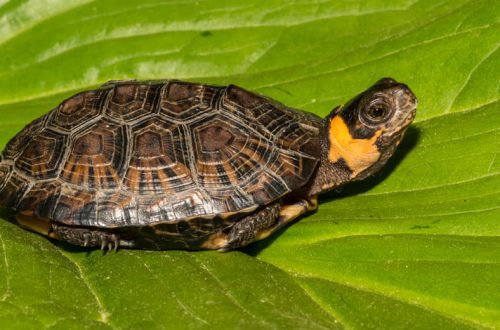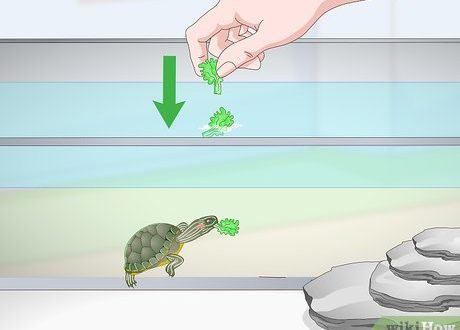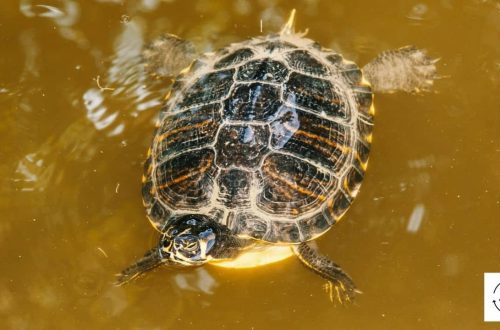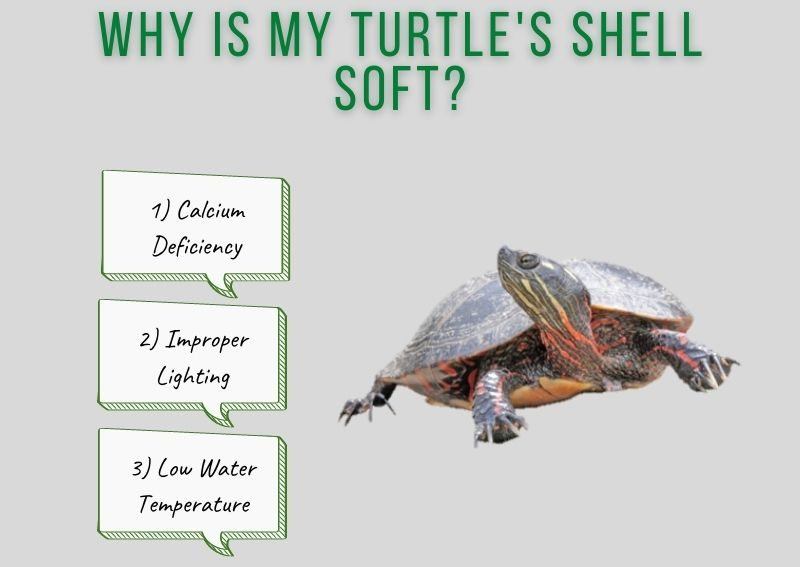
軟龜殼:原因和治療

If a pet’s shell has become soft, this is an alarming symptom of various diseases of an exotic animal, which can significantly shorten the life of a turtle or cause its death. Owners of land and aquatic reptiles need to know in which cases a soft shell is a physiological norm or pathology, how to help the animal with a change in the hardness of the dorsal shield, and how to treat a small pet.
內容
Why does a turtle have a soft shell?
Protective turtle “armor” is a strong bone formation, covered on top with symmetrical horny shields. The dorsal shield or carapace is formed from 38 scutes, the ventral part of the shell or plastron accounts for 16. The inner part of the shell is formed by bone plates connected to the skeleton and tendon ligaments.
The shape of the carapace speaks of the pet’s lifestyle. Land or Central Asian tortoises have a high domed shell; red-eared turtles are characterized by the presence of a flat dorsal shield. With age, the horny scutes of the terrestrial appear, their aquatic relatives have a smooth shell.
In all types of turtles, it should be whole and firm, without dips or spots. Soft protective shields are an age feature of young individuals until they reach 12 months of age. It is after a year that calcium salts are deposited in the bone plates, forming a protective “armor”, and their hardening. Therefore, if a reptile older than a year has a softening of the shell, it is urgent to consult a doctor.
The main causes of soft shell in turtles are the following pathologies:
- 疳;
- 胃腸道疾病;
- 甲狀腺功能不全;
- 腎髒病理學。
These diseases lead to a violation of the absorption of calcium salts by the body of a reptile, which in the early stages is manifested by softening and deformation of the shell.
The soft shell of the red-eared turtle
The deflection of the dorsal shields of a reptile when pressed is a reason to contact a specialist. Most often, red-eared turtles older than 12 months are diagnosed with rickets – a metabolic disorder against the background of a lack of calcium and vitamin salts. Early symptoms of pathology are manifested in the softening and deformation of the shell, the horny plates begin to crack, the marginal shields are bent.
As the disease progresses, the reptile exhibits limb fractures, edema, eye swelling, cloacal prolapse, beak deformity, and shallow breathing. The red-eared slider turtle cannot get out on land on its own due to the failure of the hind limbs. In advanced cases, if untreated, systemic complications develop, leading to extensive bleeding, heart failure, pulmonary edema, and death of the animal.
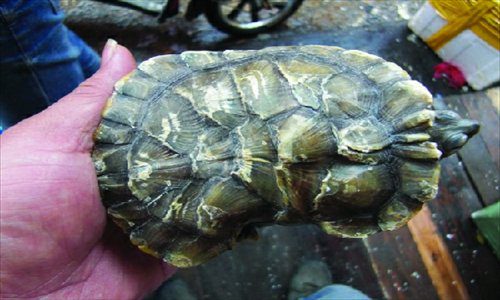
The main reasons for changes in the density of the dorsal shield in aquatic turtles are unbalanced nutrition, lack of calcium in the diet, and the absence of a source of ultraviolet light. Vitamin D, necessary for the proper absorption of calcium by the body of an exotic animal, is produced when ultraviolet rays hit the skin of a pet. The absence of direct sunlight or ultraviolet lamps in turtles, even with a balanced diet, invariably leads to the development of rickets.
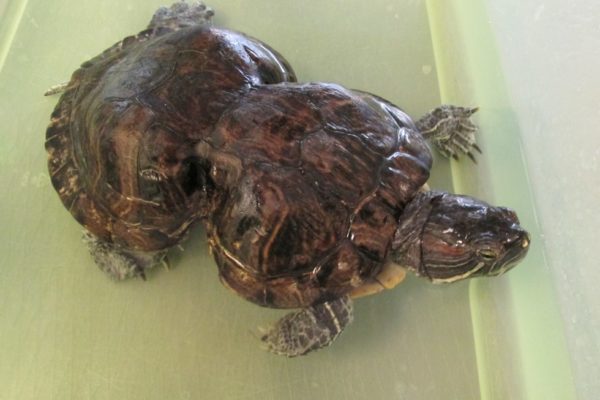
What to do if the shell of the red-eared turtle has become soft? You can strengthen the shell of an aquatic turtle using the following steps:
- review the pet’s diet, the animal should eat raw sea fish, liver, greens, vegetables, shellfish and shell snails;
- establish a source of ultraviolet radiation;
- add sources of calcium – crushed shells, sepia or calcium-containing preparations;
- introduce supplements containing vitamins A, D, E into the diet or drip an oil solution of vitamin D to the animal after clarifying the dosage from a specialist. An overdose of this vitamin is fraught with the death of an aquatic turtle.
The soft shell of a tortoise
Land tortoises need more vitamins for normal growth and vital activity compared to aquatic relatives. With proper feeding and the presence of a source of ultraviolet radiation, rickets practically does not develop in red-eared turtles, since the pet receives vital trace elements from food. Owners of Central Asian turtles, as a rule, feed only on plant foods, which, with a lack of vitamin D, inevitably leads to rickets.
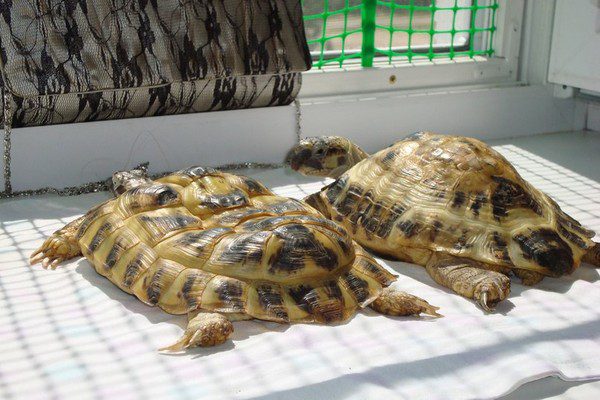
Rickets in land turtles is manifested by softening and deformation of the dorsal shield, the shell can take on a saddle-shaped or domed shape, the bone plates begin to overlap each other, bulge and bend upwards.
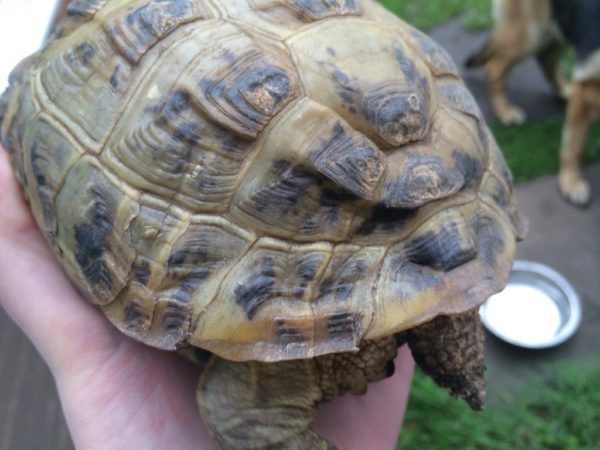
The protective “armor” noticeably brightens up to white.
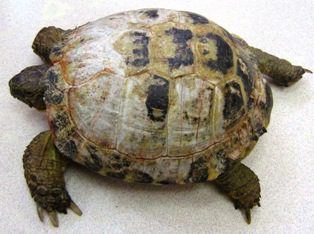
When pressing on the shell, obvious dents remain, the horn shields feel like soft plastic to the touch. The animal moves only with the help of its front paws and sleeps a lot.
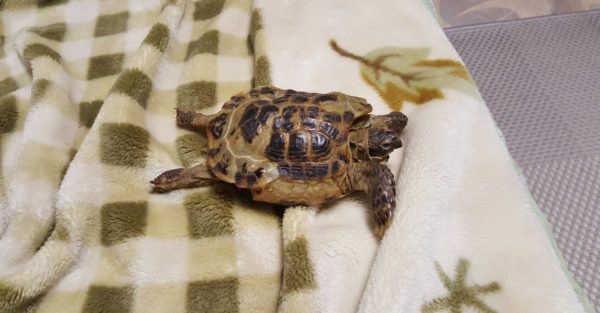
The progression of the pathology leads to severe swelling of the neck, limbs and eyes, the pet cannot retract its paws and head into the shell. Refusal to feed is due to the deformation of the upper jaw, which becomes like a beak.
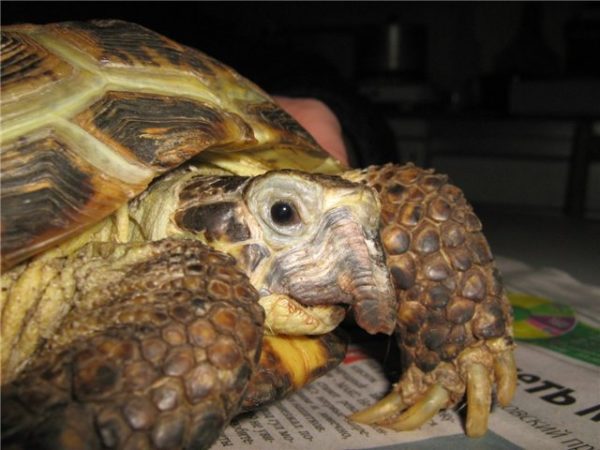
Lack of treatment leads to fractures of the limbs, pathologies of the kidneys and digestive tract, pulmonary edema and death of the animal.
What to do if the shell of a land tortoise softens? The situation can be corrected only in the initial stages of the disease by the following measures:
- installing an ultraviolet lamp for reptiles, which should shine for at least 12 hours;
- adding calcium-containing premixes, fodder chalk, cuttlefish bones or shells to the diet;
- administration of oral oily vitamin D.
If, in addition to deformation of the shell, terrestrial and aquatic turtles experience swelling of the neck, eye changes, hind limb failure and shortness of breath, the animal does not eat and sleeps a lot, it is urgent to contact a specialist, otherwise the pet may die.
For the treatment of severe rickets, the animal will need injections of calcium-containing, antibacterial, vitamin and immunomodulatory drugs. Specialists prescribe to an exotic patient daily irradiation with an ultraviolet lamp and anti-inflammatory baths in a decoction of medicinal herbs. An important component of the treatment of rickets is a balanced feeding of a pet.
Rickets is treated for a long time, from 2 weeks to six months, in advanced cases it is not possible to save the animal. If from a young age the turtle is kept in optimal comfortable conditions with proper nutrition, it most often does not have health problems and changes in the shell.
Why do red-eared tortoises have a soft shell
Please rate the article



